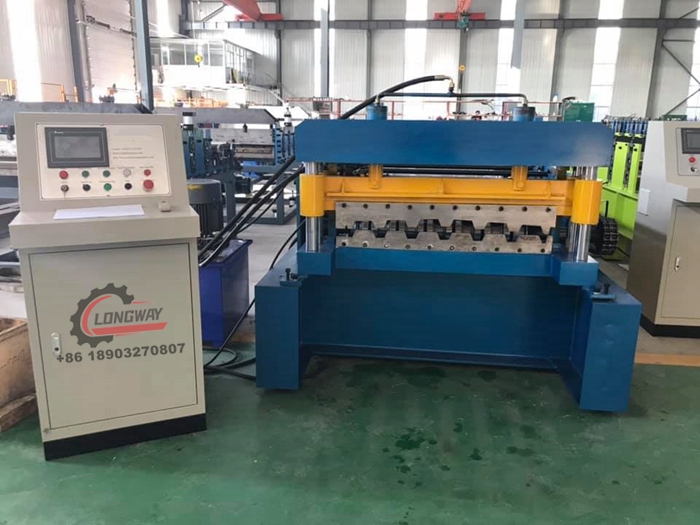C Channel Roll Forming Machine Supplier for Custom Metal Fabrication Needs
The Importance of C Channel Roll Forming Machines A Dive into the Manufacturing Process
In the ever-evolving landscape of industrial manufacturing, the drive for efficiency and precision has led to the rise of specialized machinery that can cater to specific production needs. Among these machines, the C channel roll forming machine stands out as a significant player, particularly in the construction and fabrication industries.
C channel sections, also known as C beams or C studs, are essential components used in various applications such as framing, support structures, and industrial racks. The manufacturing of these channels through roll forming not only improves product accuracy but also enhances production speed, making it a preferred choice among manufacturers.
What is Roll Forming?
Roll forming is a continuous bending operation in which a long strip of metal is passed through successive pairs of rolls to form a desired cross-section. The process is highly efficient, allowing for the production of complex shapes and profiles with minimal waste. The precision achieved in roll forming is paramount for maintaining the structural integrity of the components which will ultimately lead to their use in construction and structural applications.
C Channel Roll Forming Machines A Specialized Solution
C channel roll forming machines are designed explicitly for the purpose of fabricating C-shaped channels from various metals, including steel and aluminum. These machines comprise a series of rollers that shape the raw material into the required profile. The process begins with feeding a flat strip of metal into the machine, where it is gradually molded into a C channel as it passes through the rollers.
One of the key advantages of using a C channel roll forming machine is its ability to produce high volumes of uniform sections. This uniformity is essential in construction, where structural components must be consistent to ensure safety and compliance with building codes. Furthermore, the automation involved in these machines significantly reduces labor costs and increases productivity.
Features of a High-Quality C Channel Roll Forming Machine
When selecting a C channel roll forming machine, manufacturers should consider several essential features that enhance performance and reliability
c channel roll forming machine manufacturer

1. Material Versatility A quality machine can handle different types of materials, allowing for flexibility in production. This adaptability is crucial for companies that work with various specifications.
2. Customization The ability to customize the machine to produce specific dimensions and thicknesses of C channels can be a game changer for manufacturers aiming to meet unique client demands.
3. Built-in Automation Advanced machines come with automated controls that minimize the need for manual intervention, thereby reducing the chances of errors and increasing efficiency.
4. Energy Efficiency As sustainability becomes more prominent, energy-efficient machines are increasingly sought after. Manufacturers must balance productivity with environmental responsibility.
5. Quality Control Systems Integrated quality control features ensure that each section produced meets the necessary standards, giving manufacturers confidence in their output.
The Future of C Channel Production
As technology continues to advance, the C channel roll forming machine is expected to evolve as well. Innovations in materials and automation, alongside the growing emphasis on sustainability, will further redefine how C channels are manufactured.
Investing in high-quality C channel roll forming machines not only enhances operational efficiency but also positions manufacturers to adapt to the dynamic market demands of the construction industry. As the industry continues to grow, those equipped with the best tools and technology will undoubtedly lead the charge in meeting both client expectations and regulatory requirements.
In conclusion, the role of C channel roll forming machines in modern manufacturing cannot be understated. By embracing these specialized machines, manufacturers can ensure they remain competitive, efficient, and responsive to the needs of the construction sector, ultimately contributing to building a sustainable future.
-
Roof Panel Machines: Buying Guide, Types, and PricingNewsJul.04, 2025
-
Purlin Machines: Types, Features, and Pricing GuideNewsJul.04, 2025
-
Metal Embossing Machines: Types, Applications, and Buying GuideNewsJul.04, 2025
-
Gutter Machines: Features, Types, and Cost BreakdownNewsJul.04, 2025
-
Cut to Length Line: Overview, Equipment, and Buying GuideNewsJul.04, 2025
-
Auto Stacker: Features, Applications, and Cost BreakdownNewsJul.04, 2025
-
Top Drywall Profile Machine Models for SaleNewsJun.05, 2025








